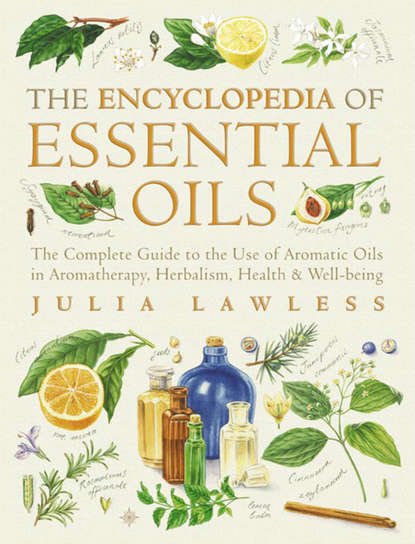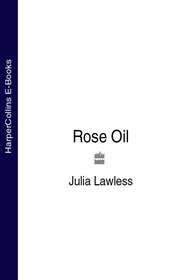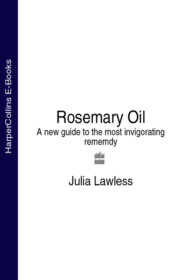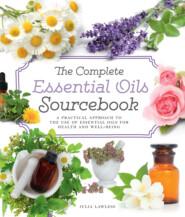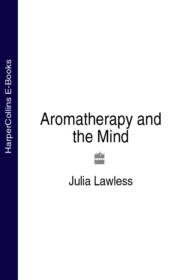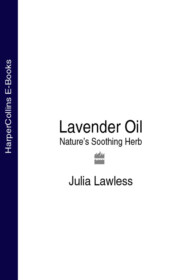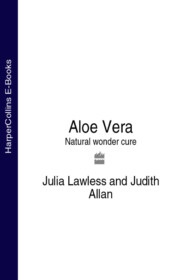По всем вопросам обращайтесь на: info@litportal.ru
(©) 2003-2024.
✖
Encyclopedia of Essential Oils: The complete guide to the use of aromatic oils in aromatherapy, herbalism, health and well-being.
Настройки чтения
Размер шрифта
Высота строк
Поля
SAFETY DATA Available information indicates it to be non-toxic, non-irritant, possible sensitization, see Peru Balsam (#ulink_57fcb415-77a8-5462-ba9f-55cf42d7a743).
AROMATHERAPY/HOME USE SKIN CARE: Dry, chapped and cracked skin, eczema, rashes, scabies, sores, wounds. RESPIRATORY SYSTEM: Bronchitis, catarrh, coughs, croup, laryngitis. ‘It may be used as an inhalant by putting about a teaspoon into a steam bath.’
OTHER USES As a fixative and fragrance component in colognes, cosmetics and perfumes (especially the dry distilled type). Some use in pharmaceutical preparations, e.g. cough syrups. Low levels used in many major food products, especially baked goods.
BASIL, EXOTIC (#ulink_0b16f8b6-bf39-52bc-b3be-c7c580720e21)
Ocimum basilicum
FAMILY Lamiaceae (Labiatae)
SYNONYMS Sweet basil, Comoran basil (oil), Reunion basil (oil).
GENERAL DESCRIPTION Botanically classified as identical from the French basil, though it is a larger plant with a harsher odour and different constituents.
DISTRIBUTION Mainly produced in the Comoro Islands, but it is also processed in Madagascar.
OTHER SPECIES The exotic basil is a dramatically different chemotype to the French basil and probably a seperate sub-species (possibly a form of O. canum), although this has not been specified. Essential oils are also produced in Morocco, Egypt, South Africa, Brazil and Indonesia from various chemotypes of the East Indian or shrubby basil (O. gratissimum), which contain a high percentage of either thymol or eugenol. The hairy or hoary basil (O. canum), originating in East Africa and found in India and South America, is also used to extract oils rich in either methyl cinnamate or camphor, which are produced in West and East Africa, India, the West Indies and Indonesia. See also entry on French basil (#ulink_6cae6ea9-139e-5d8a-8eb7-bc46ecfc33d5).
HERBAL/FOLK TRADITION See French Basil (#ulink_6cae6ea9-139e-5d8a-8eb7-bc46ecfc33d5).
ACTIONS See Basil French (#ulink_6cae6ea9-139e-5d8a-8eb7-bc46ecfc33d5).
EXTRACTION Essential oil by steam distillation from the leaves and flowering tops.
CHARACTERISTICS The Exotic type oil is yellow or pale green, with a slightly coarse sweet-herbaceous odour with a camphoraceous tinge. It’s scent does not compare with the ‘true’ sweet basil oil.
PRINCIPAL CONSTITUENTS Mainly methyl chavicol (70–88 per cent), with small amounts of linalol, cineol, camphor, eugenol, limonene and citronellol.
SAFETY DATA Methyl chavicol is moderately toxic and irritating to the skin: ‘the methyl chavicol content of Comoran basil is sufficient reason to discard it for therapeutic usage in favour of the French type.’
There has also been some recent concern over the possible carcinogenic effects of methyl chavicol. Basil should be avoided during pregnancy.
AROMATHERAPY/HOME USE None.
OTHER USE The oil is employed in high class fragrances, soaps and dental products; used extensively in major food categories especially meat products and savories.
BASIL, FRENCH (#ulink_edaa4d4a-581e-54a2-8341-1f016ef3220f)
Ocimum basilicum
FAMILY Lamiaceae (Labiatae)
SYNOYNMS Common basil, joy-of-the-mountain, ‘true’ sweet basil, European basil.
French Basil
GENERAL DESCRIPTION A tender annual herb, with very dark green, ovate leaves, greyish-green beneath, an erect square stem up to 60 cms high, bearing whorls of two-lipped greenish or pinky-white flowers. The whole plant has a powerful aromatic scent.
DISTRIBUTION Native to tropical Asia and Africa, it is now widely cultivated throughout Europe, the Mediterranean region, the Pacific Islands, North and South America. The European, French or ‘true’ sweet basil oil is produced in France, Italy, Egypt, Bulgaria, Hungary and the USA.
OTHER SPECIES There are many varieties of basil occurring all over the world, used both for their culinary and medicinal applications, such as bush basil (O. minimum), holy basil (O. sanctum), both from India, camphor basil (O. kilimanjaricum) from East Africa (also grown in India), and the fever plant (O. viride) from West Africa. However, there are two principal chemotypes most commonly used for the extraction of essential oil: the so-called ‘French basil (#ulink_6cae6ea9-139e-5d8a-8eb7-bc46ecfc33d5)’ and the ‘exotic basil (#ulink_1cd2e37d-74ec-5def-8caf-8d9eb23cee00)’ – see separate entry.
HERBAL/FOLK TRADITION Widely used in Far Eastern medicine especially in the Ayurvedic tradition, where it is called tulsi. It is used for respiratory problems such as bronchitis, coughs, colds, asthma, ’flu and emphysema but is also used as an antidote to poisonous insect or snake bites. It has also been used against epidemics and fever, such as malaria. It improves blood circulation and the digestive system and in China it is used for stomach and kidney ailments.
In the West it is considered a ‘cooling’ herb, and is used for rheumatic pain, irritable skin conditions and for those of a nervous disposition. It is a popular culinary herb, especially in Italy and France.
ACTIONS Antidepressant, antiseptic, antispasmodic, carminative, cephalic, digestive, emmenagogue, expectorant, febrifuge, galactagogue, nervine, prophylactic, restorative, stimulant of adrenal cortex, stomachic, tonic.
EXTRACTION Essential oil by steam distillation from the flowering herb.
CHARACTERISTICS ‘True’ sweet basil oil is a colourless or pale yellow liquid with a light, fresh sweet-spicy scent and balsamic undertone. It blends well with bergamot, clary sage, lime, opopanax, oakmoss, citronella, geranium, hyssop and other ‘green’ notes.
PRINCIPAL CONSTITUENTS Linalol (40–45 per cent), methyl chavicol (23.8 per cent) and small amounts of eugenol, limonene and citronellol, among others.
SAFETY DATA Relatively non-toxic, non-irritant, possible sensitization in some individuals. Avoid during pregnancy.
AROMATHERAPY/HOME USE
Skin Care: Insect bites (mosquito, wasp), insect repellent.
Circulation, Muscles and Joints: Gout, muscular aches and pains, rheumatism.
Respiratory Syste: Bronchitis, coughs, earache, sinusitis.
Digestive System: Dyspepsia, flatulence, nausea.
Genito-Urinary System: Cramps, scanty periods.
Immune System: Colds, fever, ’flu, infectious disease.
Nervous System: Anxiety, depression, fatigue, insomnia, migraine, nervous tension: ‘Oil of Basil is an excellent, indeed perhaps the best, aromatic nerve tonic. It clears the head, relieves intellectual fatigue, and gives the mind strength and clarity.’
OTHER USES The oil is used in soaps, cosmetics and perfumery; it is also used extensively in major food categories, especially savouries.
BAY, WEST INDIAN (#ulink_5032a3ee-5e82-5425-bcb3-c5a865296994)
Pimenta racemosa
FAMILY Myrtaceae
SYNONYMSMyrcia acris, Pimenta acris, myrcia, bay, bay rum tree, wild cinnamon, bayberry, bay leaf (oil).
GENERAL DESCRIPTION A wild-growing tropical evergreen tree up to 8 metres high, with large leathery leaves and aromatic fruits.
DISTRIBUTION Native to the West Indies, particularly Dominica where the essential oil is produced.
OTHER SPECIES There are several other varieties, for example the anise-scented and lemon-scented bay, the oils of which have a totally different chemical composition. Not to be confused with bay laurel, the common household spice, nor with the North American bayberry or wax myrtle (Myrcia cerifera) well known for its wax yielding berries.





